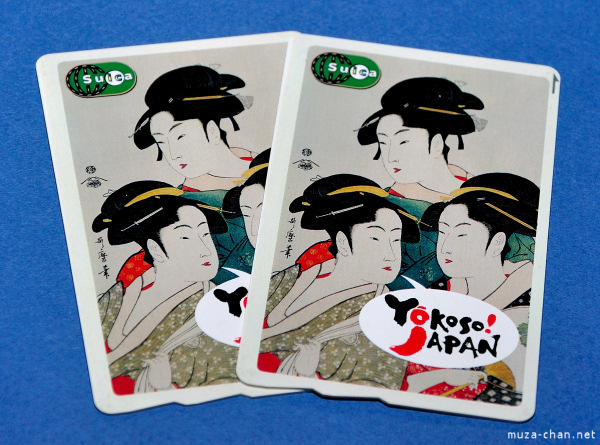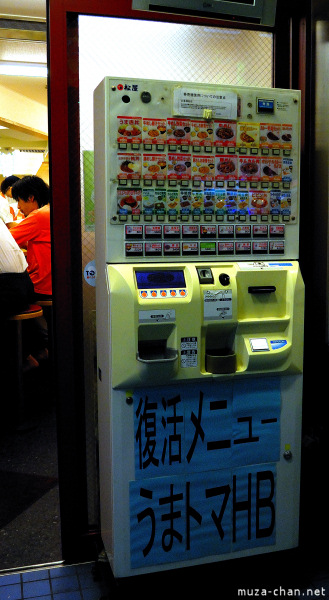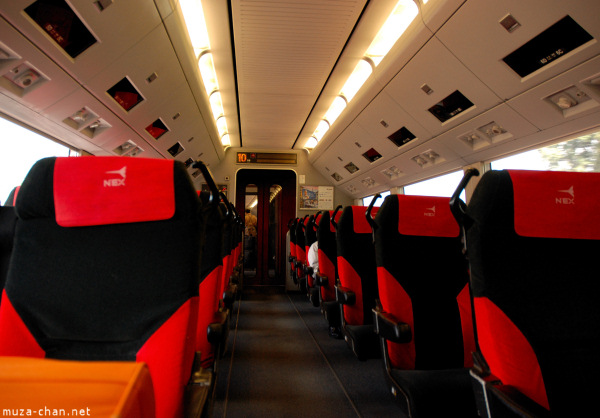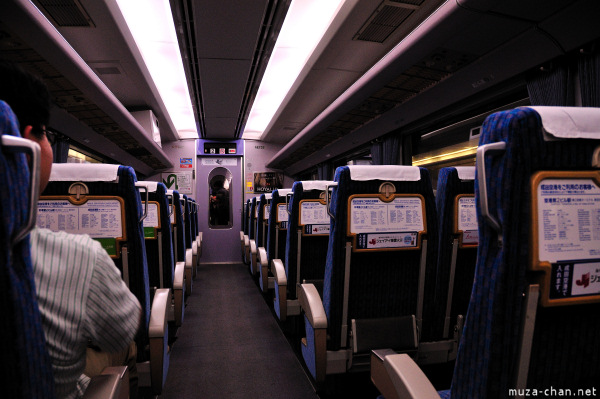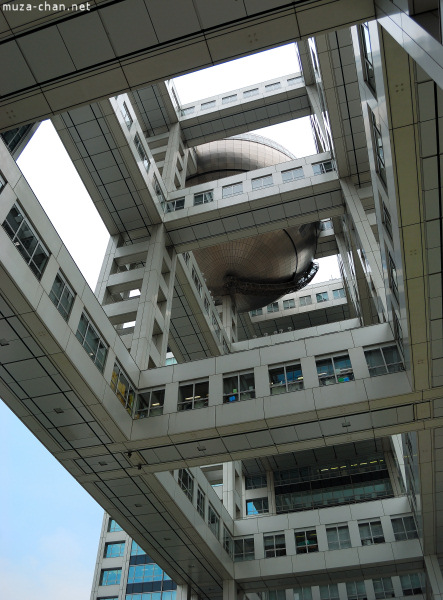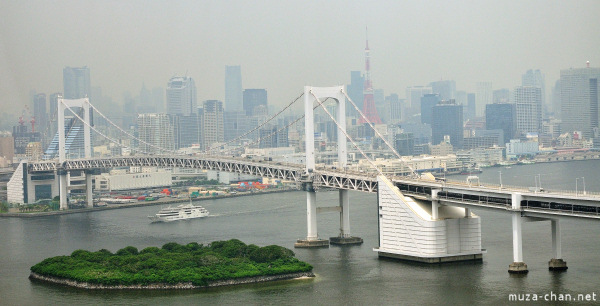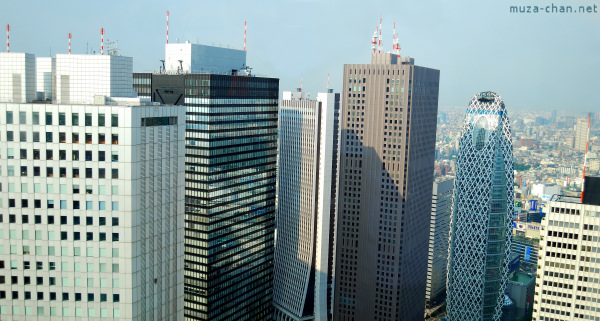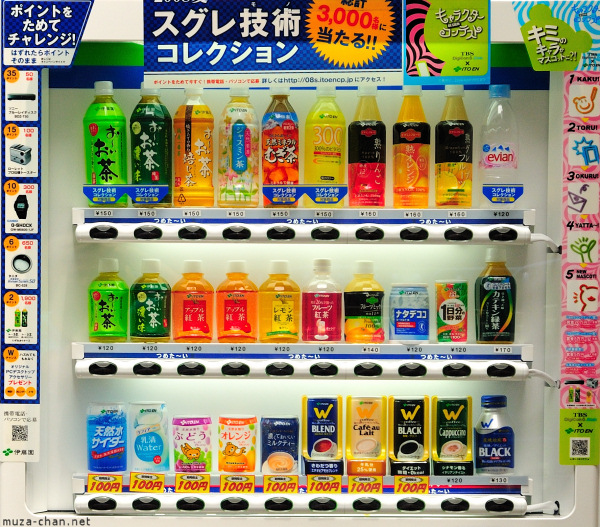When I make plans for holiday, in addition to maps and data about the places I wish to visit, I always search travel tips and information about discounts for tourists.
After accommodation and meals, I spend the most on transportation. I travel a lot, and I always search for wished to have a pass for all kind of transportation services.
So I searched for something like that in Tokyo, and I found several passes.
However some are just for one day and a little too expensive and some are available just for one transportation company and don’t cover all the destinations. After a little more calculation, I discovered that it wouldn’t be profitable, so I… passed on all those passes.
However, to get rid of the ticket price calculation, very complicated in Japan, depending on distance and company, I decided to buy a Suica, a rechargeable smart card of JR East, valid on all the trains, subways and buses in the Greater Tokyo, Sendai and Niigata. Even if I didn’t save money, at least I got rid of the stress of using the ticket vending machines.
So, I discovered that it is possible to buy a Suica from the JR Travel Service Center (Midori-no-madoguchi) at Narita airport, and get a ticket for Narita Express at a special price. Even that Narita Express is more expensive than the concurrent Keisei Skyliner (2940¥ versus 1920¥ ), with this combination I was receiving with 3500¥ a ticket and a Suica with 2000¥ credit. For two persons resulted a saving of approximative 1000¥ … and as a bonus, I traveled with Narita Express: :)
The Suica for foreigners is beautifully designed:
Obviously, when I returned, from Tokyo to Narita I preferred the Keisei Skyliner:
Talking about the ticket prices, I recommend to avoid, if possible, the expensive lines, like Toei, preferring the JR trains, which are cheaper. You can make even calculate before you choose the hotel, knowing the places you wish to visit. However, during my first trips I didn’t do that, I stayed at a hotel in Asakusa and I was forced to rely on two expensive lines, for example, Tokyo Metro Ginza Line and Toei Asakusa Line. This year I’ll stay in Ueno, near the JR station.
If you want to travel outside Tokyo, it is convenient to buy a Japan Rail Pass. I never used it, because I traveled out of Tokyo on lines belonging to other companies, that offered other advantages.
For some tourist areas outside of Tokyo, there are several companies offering Discount Passes, some available only for foreigners. These passes may offer a significant reduction on ticket prices, unlimited travel to public transportation on the area and free or reduced entrance tickets to museums and temples.
For my trip to Nikko, I used the World Heritage Pass offered by the Tobu Line, a pass that can be bought at the Tobu Sightseeing Service Center in Asakusa. This center is a little hard to find, so here’s the Google Maps location:
View Larger Map
For the trip to Hakone I used a Hakone Freepass, provided by Odakyu Line. This pass can be bought at the Odakyu Sightseeing Service Center, in Shinjuku station.
I like to visit museums and I saved money with the Tokyo Museums Grutt Pass, a 2000¥ multi-museum admission ticket, valid for 66 museums, zoos and aquarium in Tokyo. The most tempting for me were: Ueno Zoo, Edo Tokyo Open Air Museum of Maritime Science, Edo Tokyo Museum, Tokyo National Museum, Museum of Maritime Science and Tokyo Metropolitan Art Museum.
I bought Grutt Pas from the Tokyo Tourist Information Center, located at the ground Tokyo Metropolitan Government Office, but it can be bought from elsewhere, even from convenience stores. From a simple calculation, taking an average entry price of 400¥, the Grutt Pass is convenient if you plan to visit more than 5 museums.
I like to view the city from above and to take pictures at different times of the day. I visited in Tower and the Sunshine City, but due to the high prices of tickets, I didn’t go too often. So, I searched for places where the entry is free. One of the most interesting places is the Fuji TV:
In addition, the visit to the sphere from the 25th floor costs only 500¥, and the scenery is great.
The admission into the two observatories in the Tokyo Metropolitan Building is also free:
Also, the admission into the Sumitomo Building, located nearby (the building on the left in the above photo) is free.
Other significant expenses during summer trips in Tokyo are the soft drinks. I don’t have problems with the heat, because the summers in Bucharest are much warmer than in Tokyo, but I find it difficult to adapt to the air humidity and the scorching sun, so I drink a lot of soft drinks. I usually preferred to buy from the street vending machines or from convenience stores, because they are cheaper than the restaurants.
In addition, I could enjoy a huge variety:
For lunch, from time to time, I used the ramen vending machines, which provides a low price warm and tasty meal:
Also, a part of the evening meal can be a portion of instant noodles, from the convenience stores and cooked using the water boiler provided by the hotel.
I also learned recently that the budget bento lunches have become popular, so maybe I’ll try them this year.
Useful links: :
Atunci când îmi fac planificarea pentru vacanţă, pe lângă hărţi şi date despre locurile pe care vreau să le vizitez, mă interesez şi de reducerile pentru turişti.
După cazare şi masă, cei mai mulţi bani îi cheltuiesc pe transport. Mă deplasez mult şi pentru mine este convenabil să am un abonament pe toate mijloacele de transport.
Am căutat aşa ceva şi în Japonia şi am descoperit că există mai multe abonamente, dar fie sunt valabile doar o zi şi sunt calculate pentru mai mult decât am eu nevoie, fie sunt valabile pentru o singură companie care nu acoperă toate zonele în care vreau să ajung. După un mic calcul, am decis că nu mă avantajează niciuna din variante.
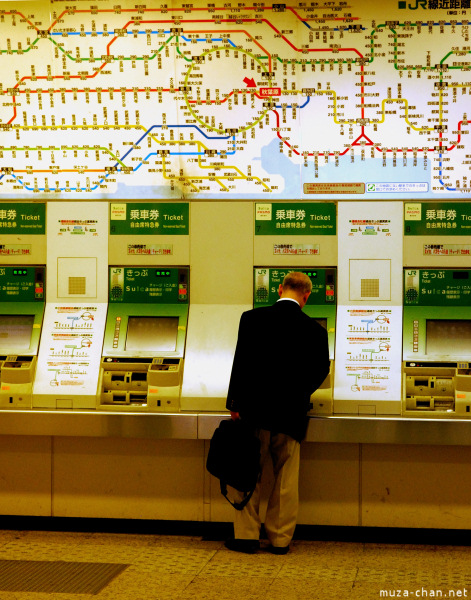
Totuşi, pentru a scăpa de calculul preţului biletelor, foarte complicat în Japonia, diferit în funcţie de distanţă şi de companie, m-am decis să cumpăr Suica, un smart card emis de JR East, valabil pe trenuri, metrouri şi autobuze în Greater Tokyo, Sendai şi Niigata. Chiar dacă nu am făcut economii, am scăpat de stresul folosirii automatelor de bilete.
Aşa am descoperit că se poate cumpăra o Suica de la JR Travel Service Center (Midori-no-madoguchi) din aeroportul Narita, primind şi un bilet pentru Narita Express la un preţ special. Deşi Narita Express este mult mai scump decât concurentul Keisei Skyliner (2940¥ faţă de 1920¥ ), prin această combinaţie obţineam cu 3500¥ şi un bilet şi o Suica încărcată cu 2000¥. Pentru două persoane, rezultă o economie de aproximativ 1000¥ … plus că am călătorit cu Narita Express: :)
Suica pentru străini are are un design deosebit:
Evident, la întoarcere, drumul din Tokyo la Narita l-am făcut cu Keisei Skyliner:
Vorbind de preţul biletelor, vă recomand să evitaţi, dacă se poate, liniile scumpe, cum sunt, cele ale Toei, preferând liniile deservite de JR, care sunt cele mai ieftine. Puteţi chiar să faceţi un calcul înainte de a vă alege hotelul, ştiind locurile pe care doriţi să le vizitaţi. Ceea ce eu n-am făcut în primele călătorii, fiind cazată în Asakusa şi fiind nevoită să căltoresc zilnic cu doua linii scumpe, Tokyo Metro Ginza Line şi Toei Asakusa Line. Anul acesta însă voi sta în Ueno, aproape de staţia JR.
Dacă vreţi să călătoriţi mult în afara Tokyo-ului, este convenabil să cumpăraţi Japan Rail Pass. Eu nu l-am folosit pentru că am ieşit din Tokyo pe linii aparţinând altor companii, care mi-au oferit alte avantaje.
Pentru unele zone turistice din afara Tokyo-ului, sunt câteva companii care oferă Discount Pass. Acestea pot oferi pe lângă o scădere semnificativă a preţului biletelor, călătorii nelimitate cu mijloacele de transport din zona respectivă, bilete de intrare gratuite sau reduse pentru unele temple sau muzee.
Am folosit pentru excursia de la Nikko World Heritage Pass oferit de Tobu Line, cumpărat de la Tobu Sightseeing Service Center din Asakusa. Acest centru e ceva mai greu de găsit, aşa că iată-l localizat în Google Maps:
View Larger Map
Iar pentru călătoria la Hakone am folosit Hakone Freepass, oferit de Odakyu Line. Poate fi cumpărat de la Odakyu Sightseeing Service Center din staţia Shinjuku.
Îmi place să vizitez multe muzee şi am făcut economii folosind Tokyo Museums Grutt Pass, un abonament care asigură intrarea la 66 de muzee, zoo sau acvarii din Tokyo, dintre care cele mai tentante pentru mine au fost: Ueno Zoo, Edo Tokyo Open Air, Museum of Maritime Science, Edo Tokyo Museum, Tokyo National Museum, Museum of Maritime Science şi Tokyo Metropolitan Art Museum.
Am cumpărat Grutt Pass de la Tokyo Tourist Information Center, aflat la parterul Tokyo Metropolitan Government Office, dar se poate cumpăra şi din alte părţi, chiar de la unele supermarket-uri. Dintr-un calcul simplu, considerând un preţ de intrare mediu de 400 円, rezultă că Grutt Pass este convenabil de cumpărat dacă ai de gând să vizitezi mai mult de 5 muzee.
Îmi place să privesc oraşul de sus şi să fac fotografii la diferite ore ale zilei. Am fost în Tokyo Tower şi Sunshine City, dar datorită preţului mare al biletelor, nu mi-a convenit să revin de prea multe ori. Aşa că am căutat locuri în care intrarea este liberă. Unul dintre cele mai interesante este Fuji TV:
În plus, intrarea în sfera de la etajul 25 costă doar 500¥ , iar priveliştea este grozavă.
Intrarea în cele două observatoare din Tokyo Metropolitan Building este de asemenea liberă:
La fel, intrarea în Sumitomo Building, aflată în apropiere (clădirea din stânga din fotografia de mai sus), este tot liberă.
Alte cheltuieli importante în excursiile în Tokyo, vara, au fost băuturile răcoritoare. N-am avut probleme cu căldura, pentru că la Bucureşti verile sunt mult mai calde decât în Tokyo, dar m-am obişnuit greu cu umiditatea mare a aerului şi cu soarele arzător, aşa că am băut multe răcoritoare. În afară de orele de masă, am preferat să cumpăr sucurile de la automatele de pe stradă sau de la supermarket, pentru că sunt mult mai ieftine decât în restaurante.
În plus, m-am putut bucura de varietate, încercând de fiecare dată alt produs:
Pentru masa de prânz, din când în când, am folosit automatele de ramen, care oferă o masă caldă şi gustoasă la un preţ mic:
La fel, o parte din masa de seară, poate fi alcătuită dintr-o porţie de instant noodles, cumpărată de la combini şi “gătită” folosind fierbătorul din camera de la hotel.
Am aflat de curând că budget bento lunches au devenit populare, aşa că poate am să le încerc şi eu anul acesta.
Link-uri utile: :
